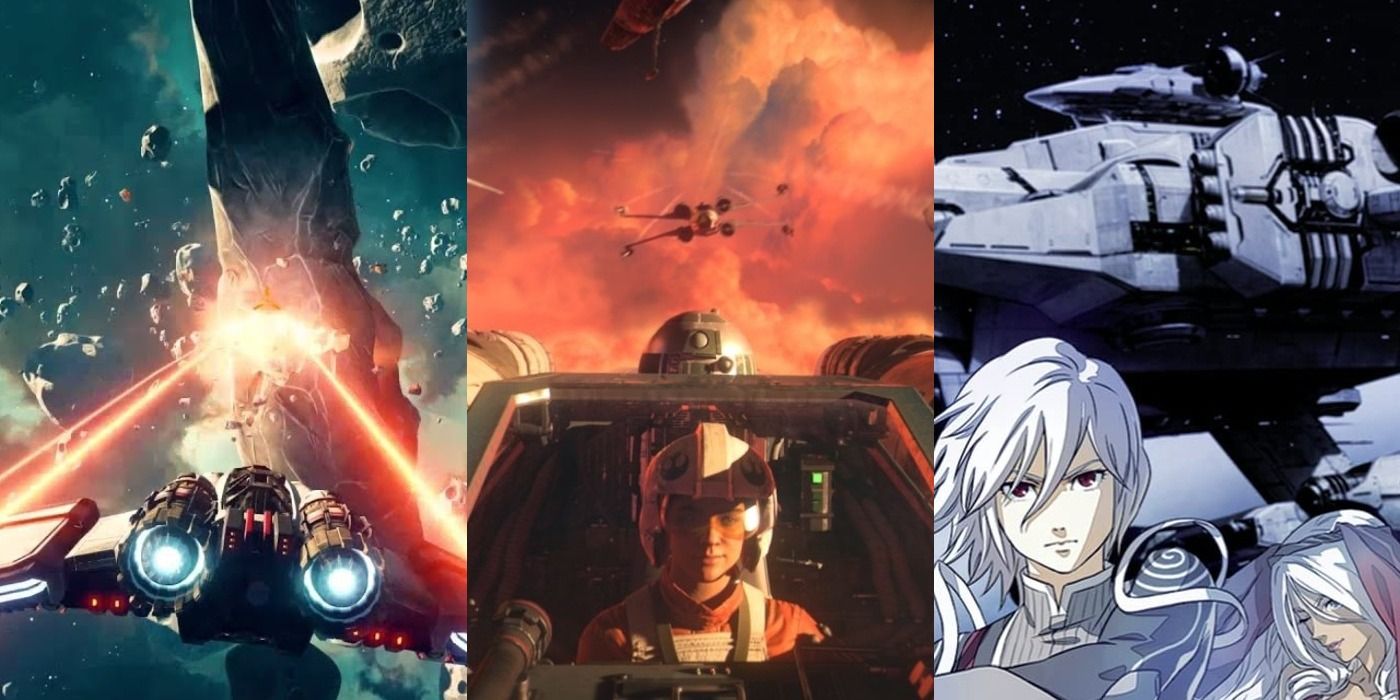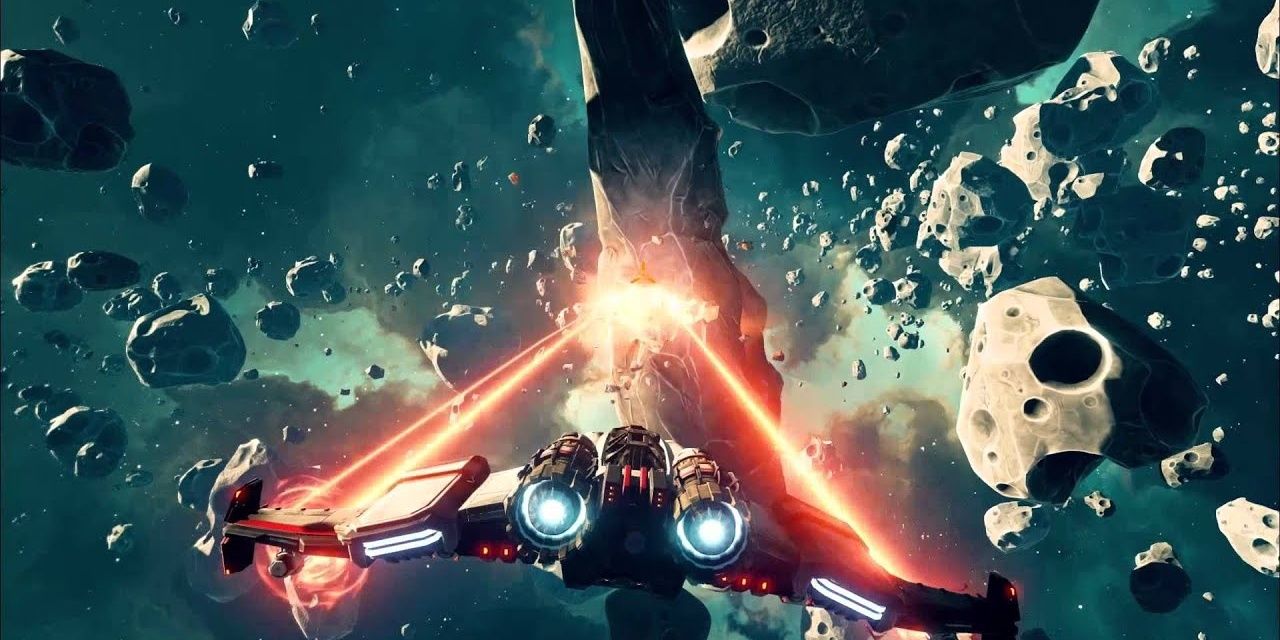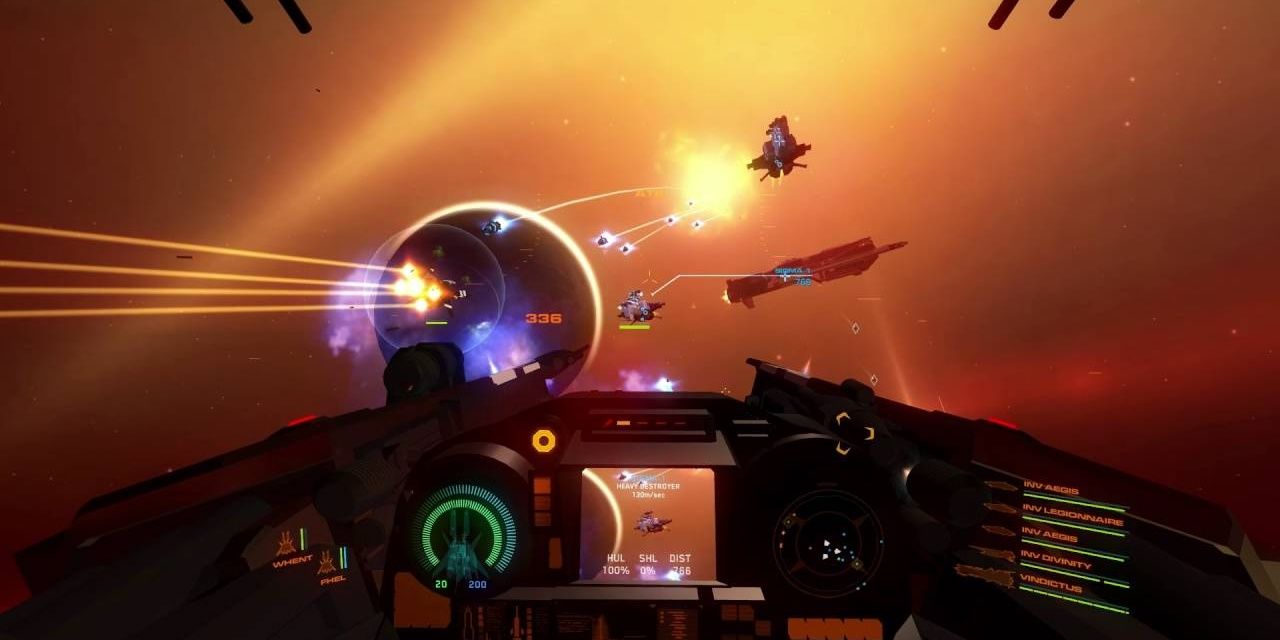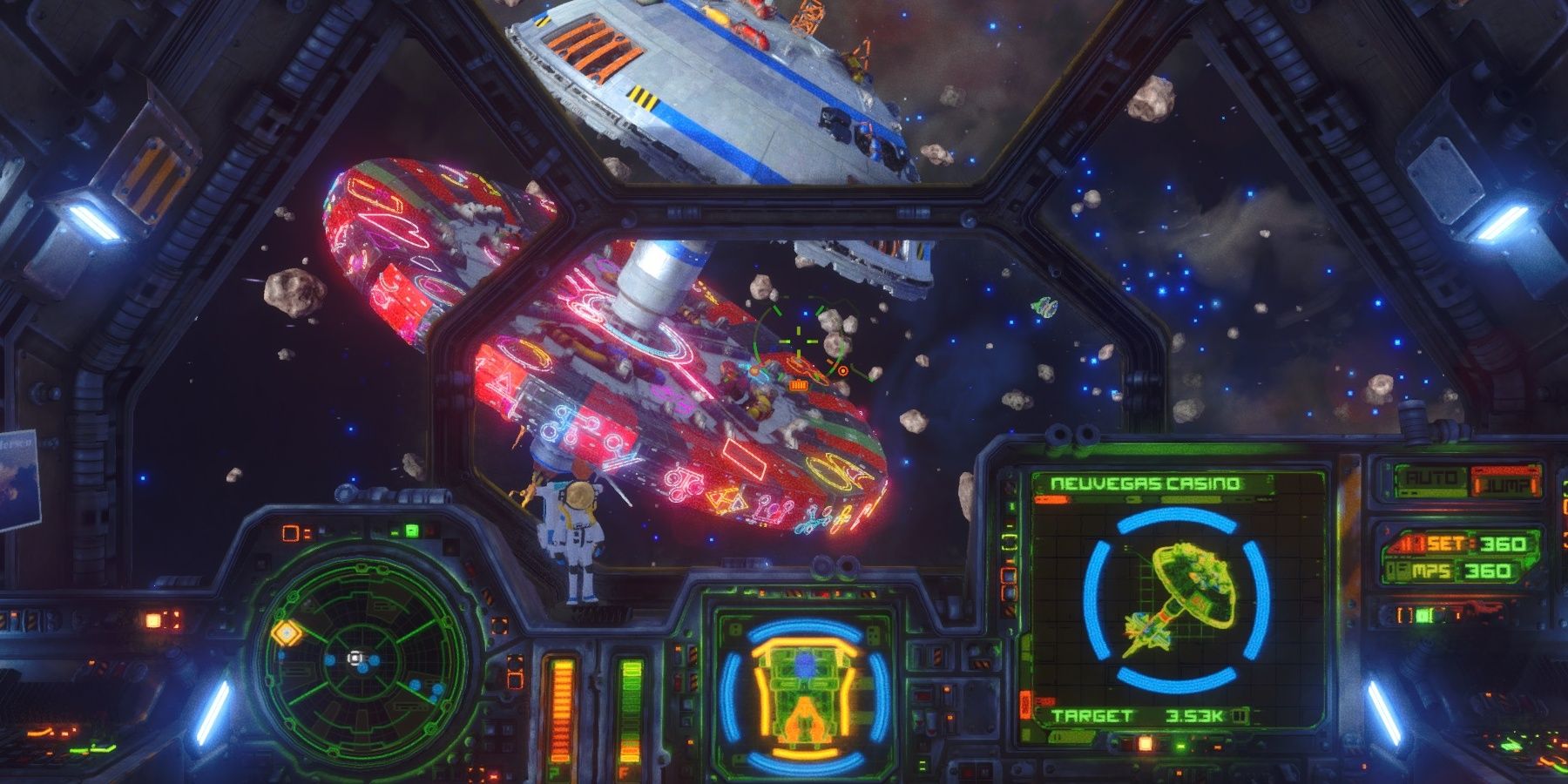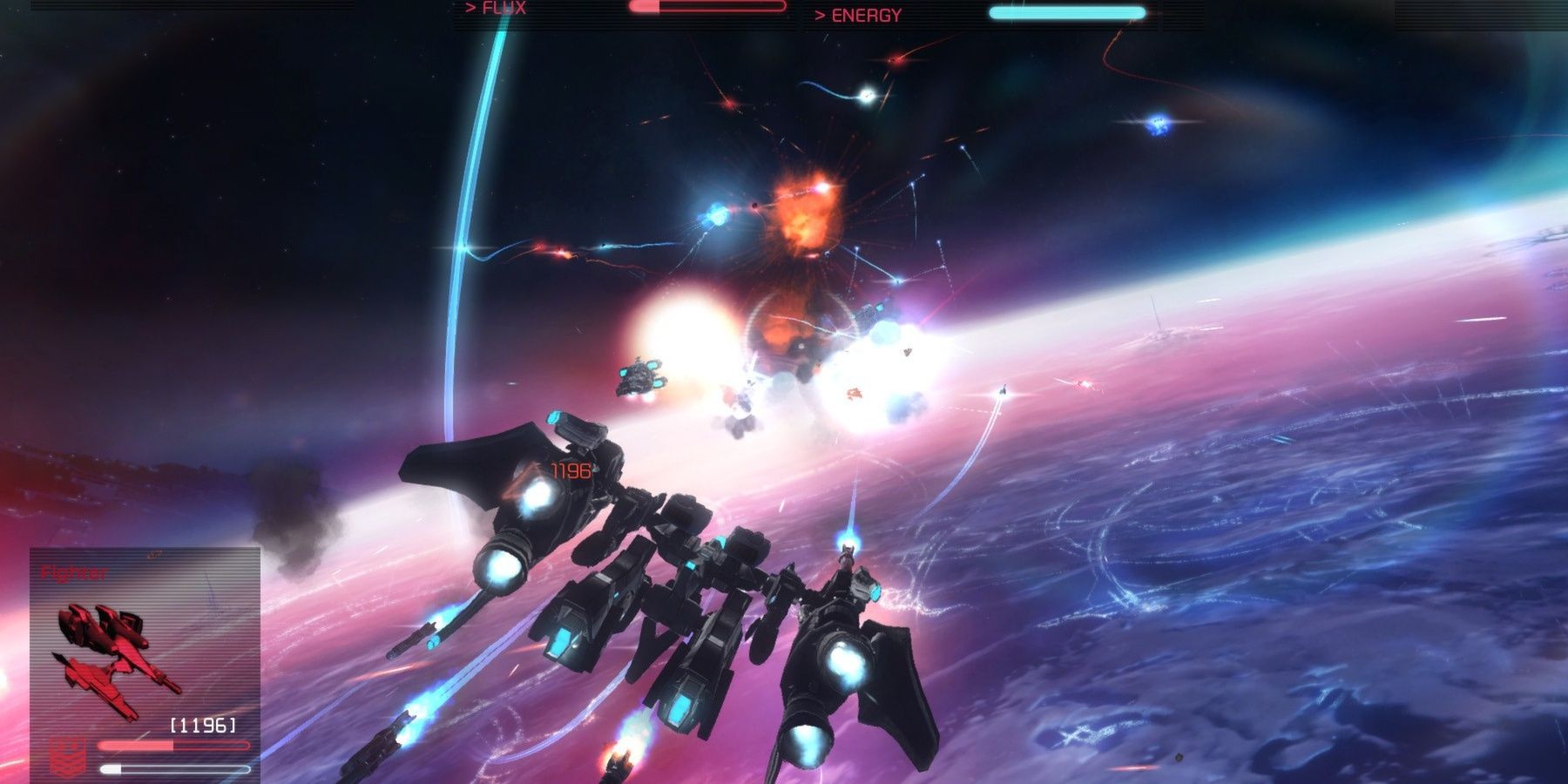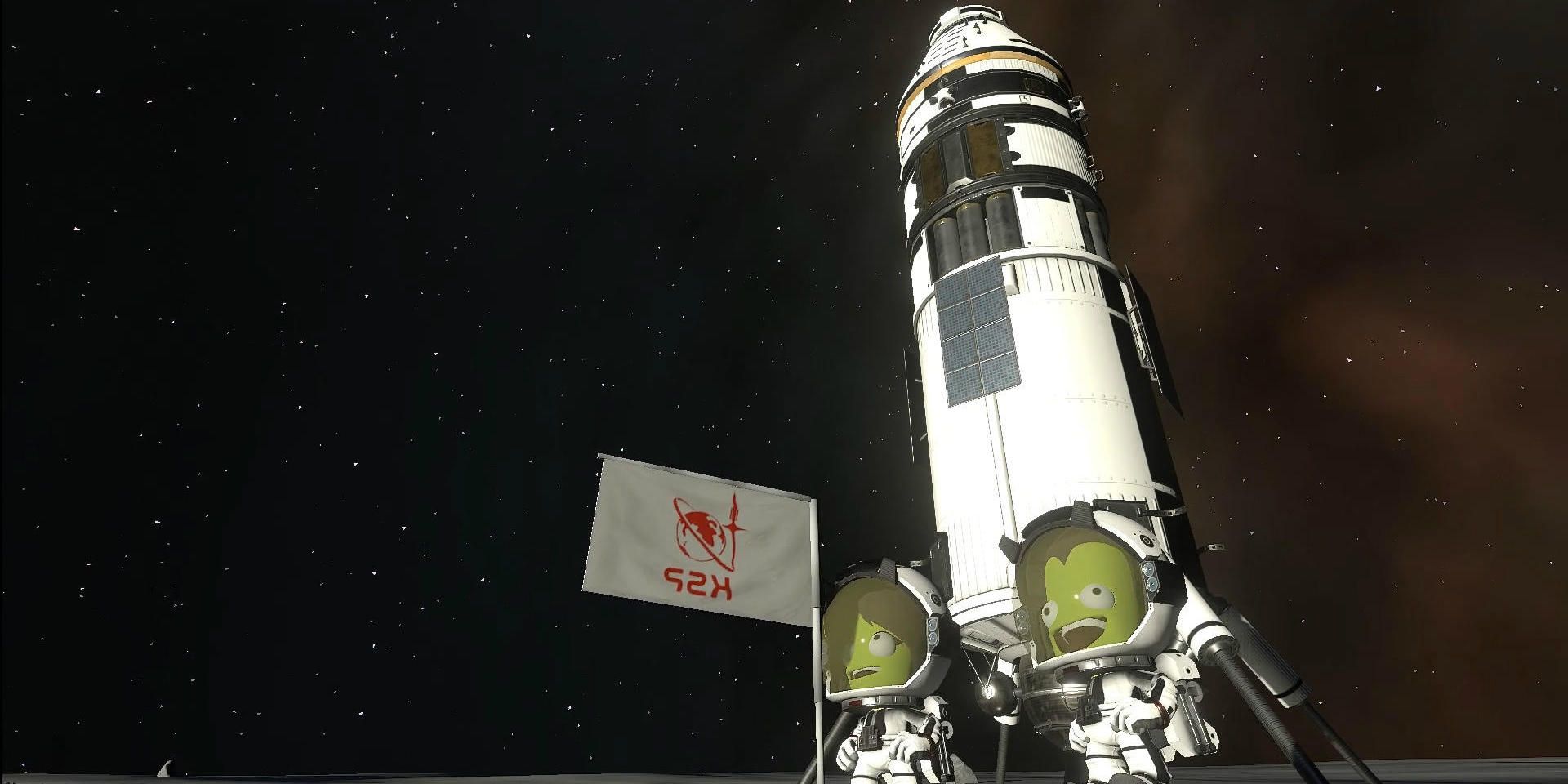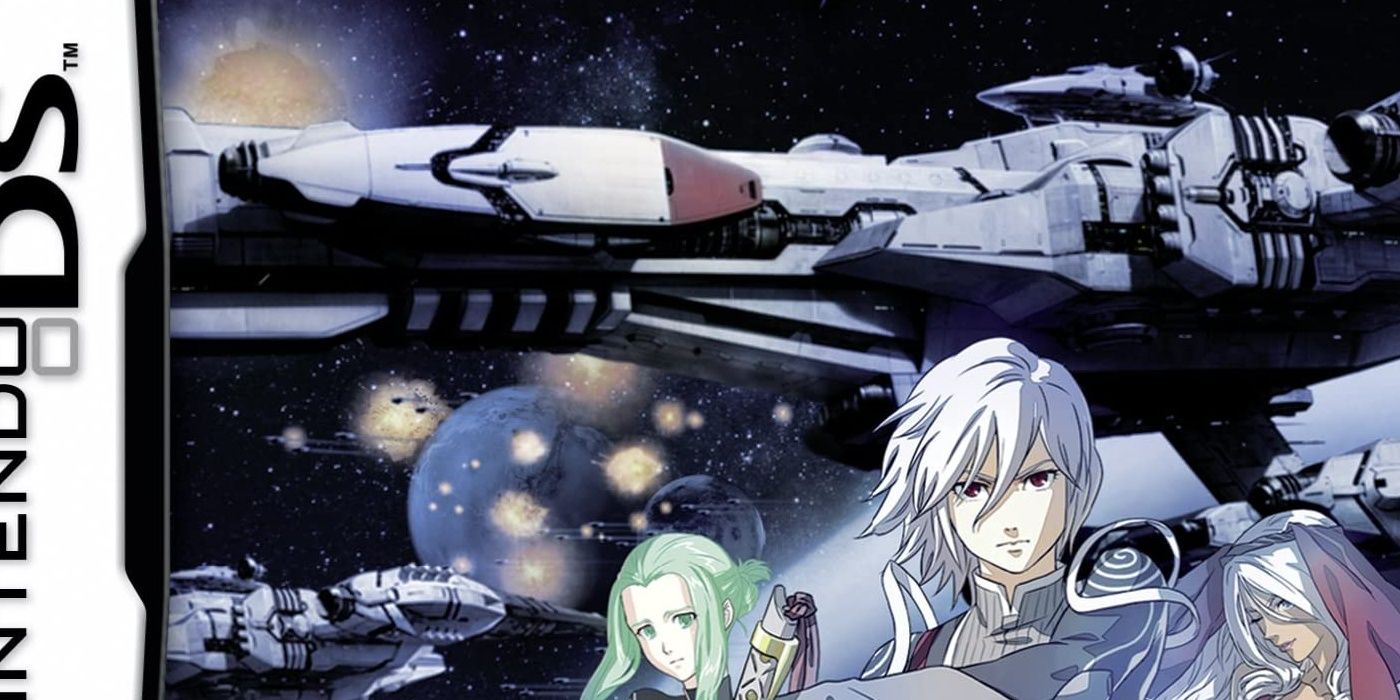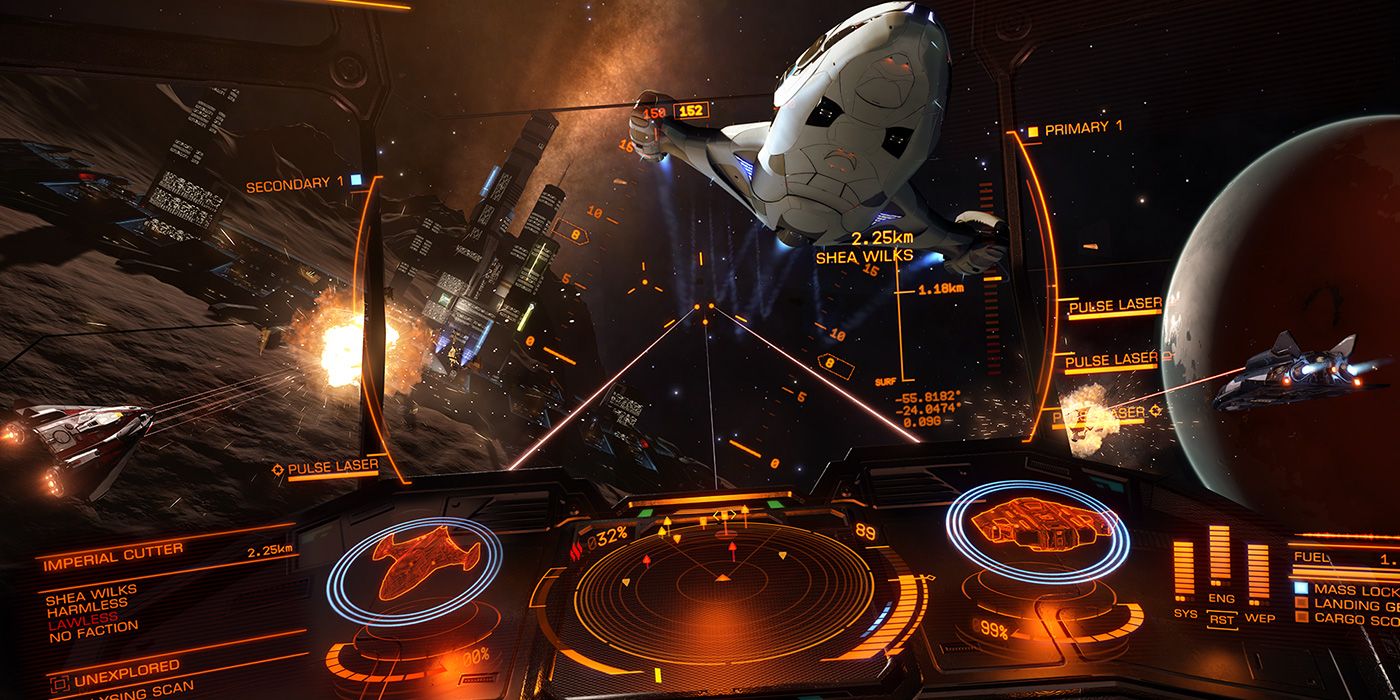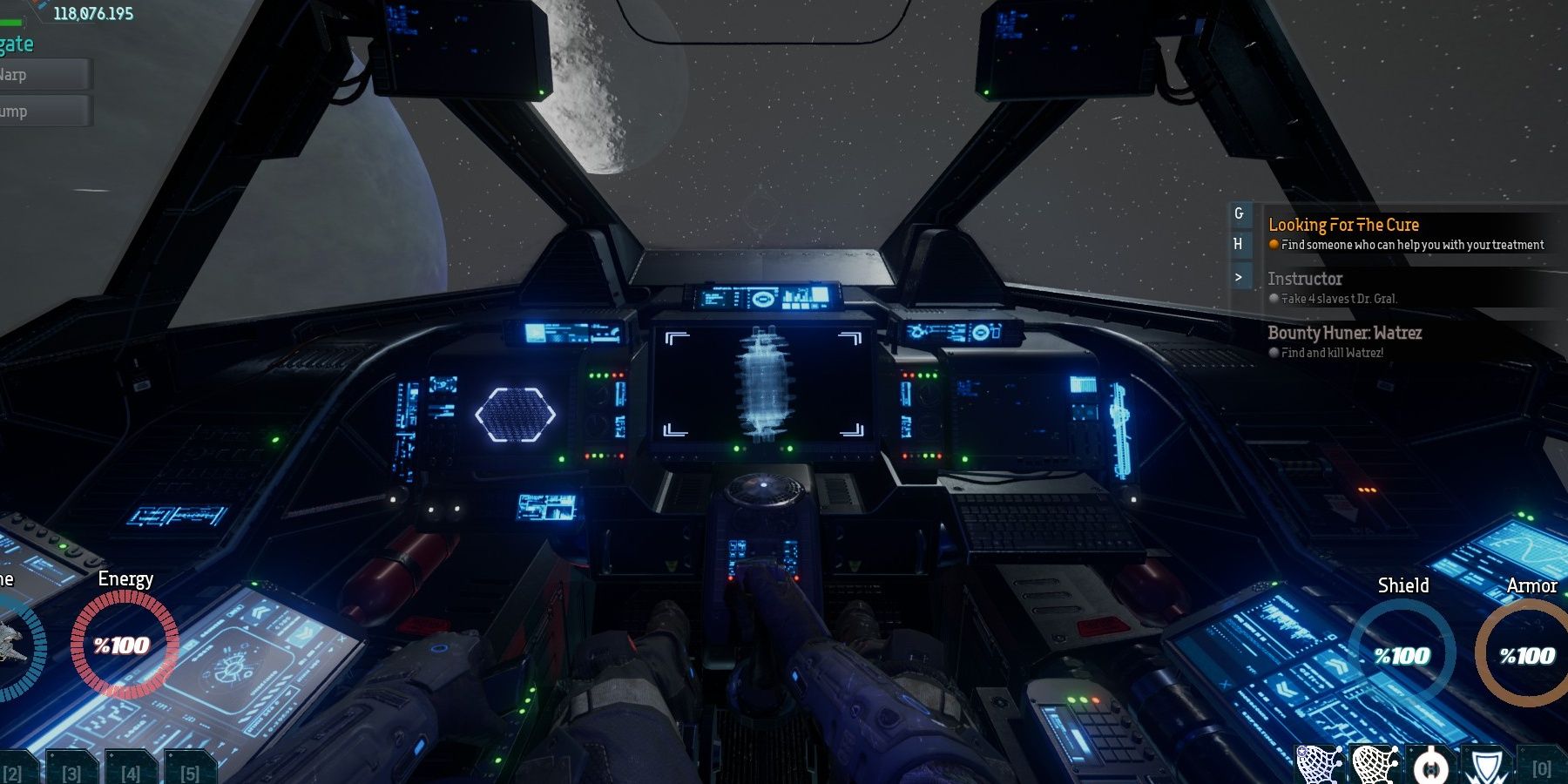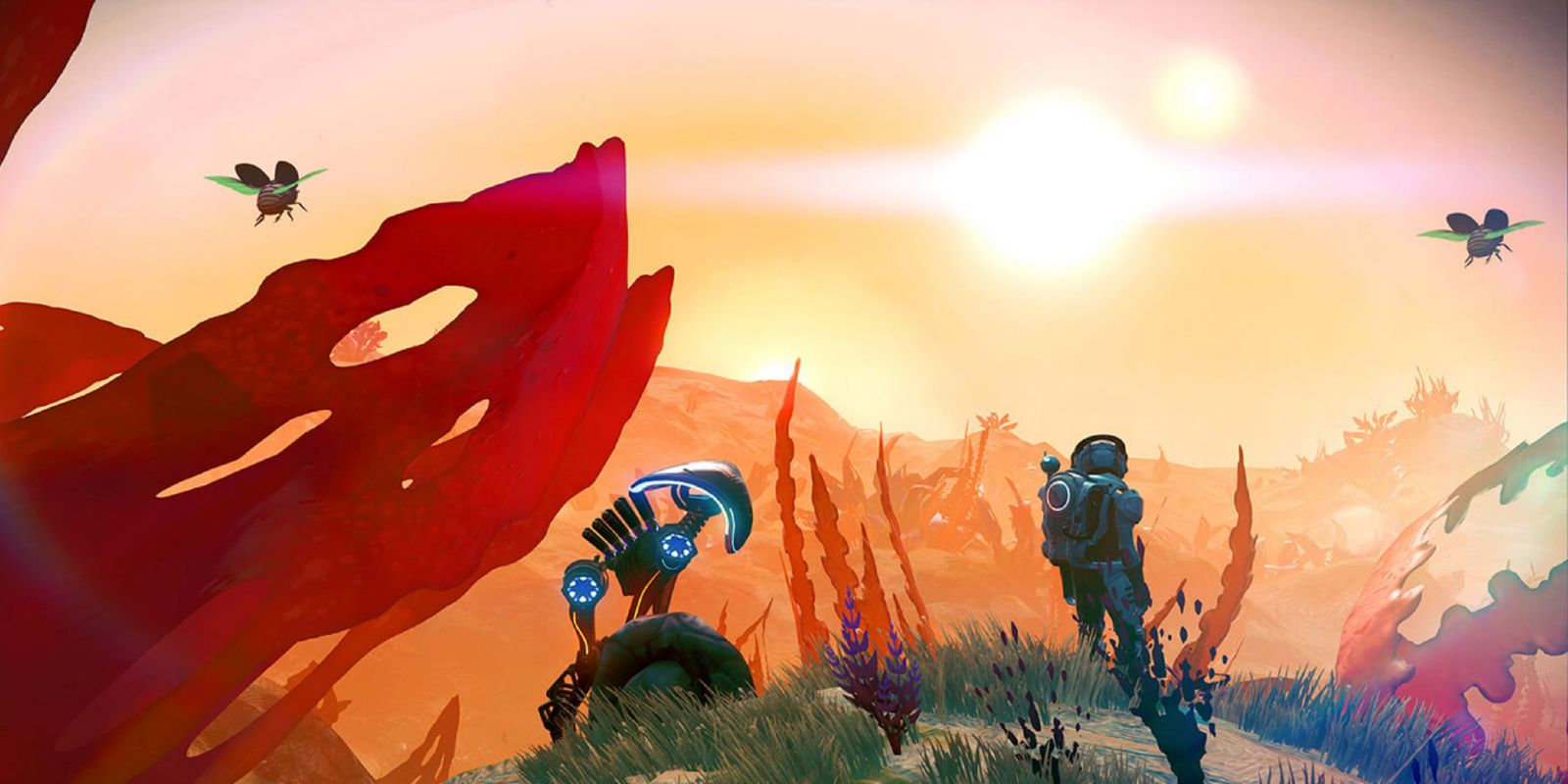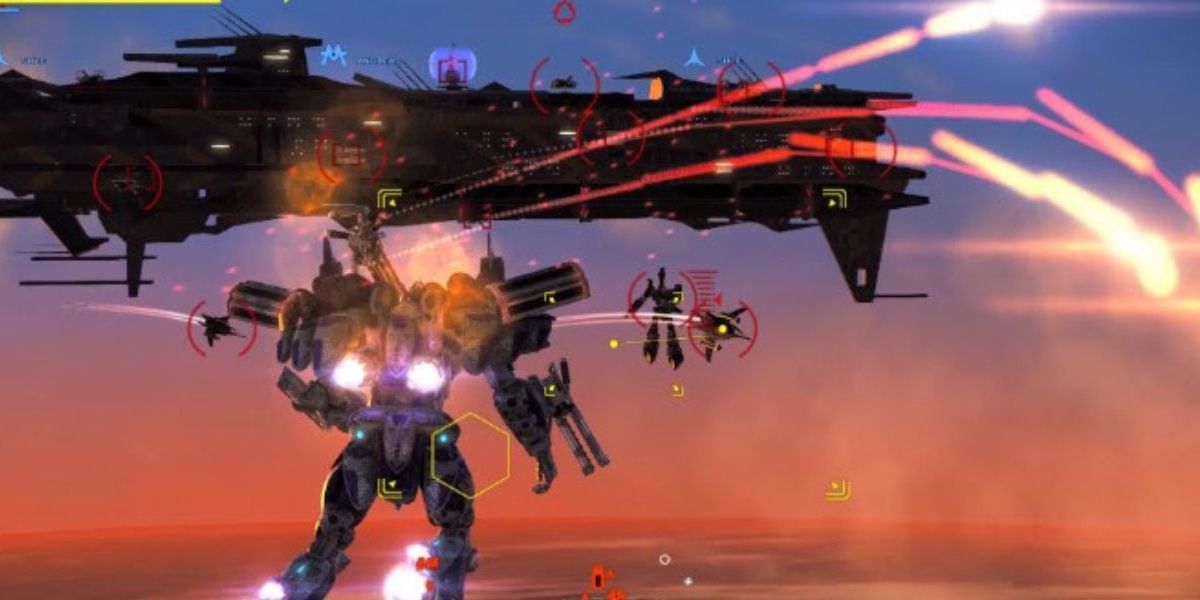Star Wars: Squadrons dropped in the final months of last year as a spiritual sequel to the X-Wing series, garnering praise for its atmospheric elements and multiplayer modes. A space combat game to the core, the game is set after the events of Return of the Jedi and allows players to switch between multiplayer and single-player modes.
Both the New Republic and the Empire bear four starfighter classes that the players can choose from, including classic fighters like the TIE Fighter, X-Wing, A-Wing, and so on. Star Wars: Squadrons' entirely first-person perspective from the aircraft cockpit is bound to remind audiences of more classic and contemporary flight simulators.
Everspace (2017)
Roguelike components and a non-linear storyline adorn this 3D space shooter that was developed by Rockfish games for Microsoft Windows, Xbox One, and PlayStation 4 among other platforms. A sequel is planned to release this year with a preview that launched just a few days back.
The gameplay commences in various sectors of outer space, while players encounter nostalgic arcade-like combat. Each sector yields a new story that would entertain players who are into classic 80s sci-fi that delved into space exploration.
House Of The Dying Sun (2016)
This tactical shooter focuses on strategy more than space action. Players can not only control their own vehicles but also monitor the starships of their allied forces. The philosophy behind House of The Dying Sun lies in collective military effort in winning campaigns, rather than a single pilot taking charge.
It's this strategic element that sets it apart from other high-octane space simulators. As of now, the game is available chiefly for Microsoft Windows.
Rebel Galaxy (2015)
Rebel Galaxy can arguably be termed as a 'space Western' that finds players flying across the galaxy to become an influential capital-class pilot by all means possible. Missions include bounty hunting, combat, trading, mining, and pirating.
The game also evokes a classic arcade feel to it, providing simple, mindless intergalactic fun. Released for Windows in 2015, Rebel Galaxy was made available for Xbox One and PlayStation 4 a year later.
Strike Suit Zero (2013)
Drawing from the classic dogfights of arcade games, Strike Suit Zero is an amalgamation of all notable space combat influences, ranging from Elite to Star Wars to Homeworld.
Set in the near future, players assume the role of a United Nations of Earth (UNE) pilot while encountering opposing ships from other space colonies. Reinterpretations and influences from other space combat franchises are present in other aspects of the game too as the original score is composed by Homeworld composer Paul Ruskay. Even the ship designs were masterminded by mecha designer Junji Okubo who was involved in Infinite Space.
Kerbal Space Program (2011)
Apart from its space combat, Kerbal Space Program is instantly identifiable because of its little, green aliens. But these cute-looking extraterrestrial creatures (some of which need to be decimated in a few missions) don't take away the serious attention to detail that the game boasts of.
Kerbal Space Program is increasingly praised for its scientific accuracy especially in terms of the spaceships' orbital mechanics. In fact, even NASA has collaborated with the game to create new missions (based on real space projects).
Infinite Space (2009)
Infinite Space is a Nintendo DS release by SEGA, boasting of both space simulation and role-playing elements. A plot-driven venture, the game offers players the option of building and designing their own ship with at least 150 available designs.
Apart from the anime overtones, the game's plot is also influenced by iconic sci-fi author Arthur C. Clarke's novel Childhood's End. Rich in its mythology and spanning across two decades in two different galaxies, the game drew positive reviews being seen as a space opera of sorts.
Elite Dangerous (2014)
Elite Dangerous is a space combat simulation that's quite simple to play, but it's still heavily engaging with a realistic 1:1 open-world depiction of the Milky Way galaxy. Actual stars and planets can be explored while the players can trade, engage in combat, or just steer their ships in the abyss for fun. A part of the Elite franchise of space-sims, Elite Dangerous serves as a direct sequel to Frontier: First Encounters (1995).
The multiplayer experience is way better and most of the gameplay is of an open-ended nature. A PlayStation 4 variant was also released in 2017, while also supporting all VR devices for PC.
SpaceBourne (2018)
Just like the aforementioned Rebel Galaxy, SpaceBourne also gives considerable freedom to the player to pretty much do anything, from hunting bounties to mining asteroids. The futuristic weapon customization in the spaceships (four different classes) is also noteworthy.
Similar to the Star Wars series' Rebel and Empire forces, there are two opposing sides in SpaceBourne. Players are given the choice of siding with either one or lead their own breakaway faction.
No Man's Sky (2016)
At its core, No Man's Sky is a space exploration and survival game, with its fair share of dogfights and cockpit simulations. More than its gameplay, its vast setting is notable. The game includes a massive system of planets, each with its unique flora and fauna. Some of the inhabitants might be interested in trading with the protagonist while others might engage in combat.
To put it in a nutshell, No Man's Sky is a highly atmospheric and visually-pleasing space journey that balances survival with combat simulation.
War Tech Fighters (2018)
Even though most of the space simulators have been heavily influenced by classic sci-fi like Star Wars, War Tech Fighters might be the most anime-inspired combat simulator in recent history.
The players are tasked with saving the galaxy not from the vicinity of a spaceship, but a heavy-duty 'War Tech' that can be customized and upgraded with various options. Fans of Japanese franchises like Gundam would love the gameplay, which includes space combat with mega-swords and shields.

